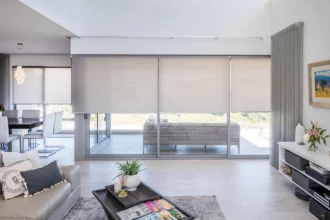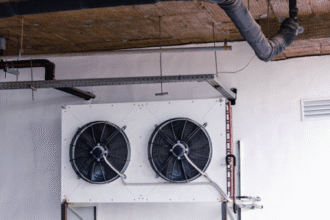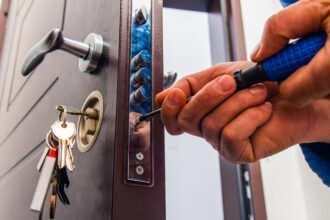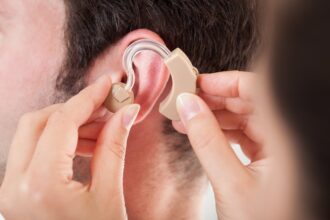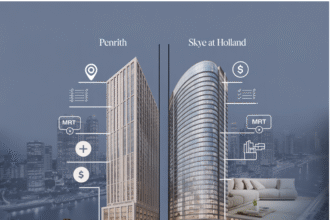A wardrobe isn’t just a storage solution, it’s a long-term investment in your bedroom’s organization, aesthetic, and functionality.
Whether you’re furnishing a new home or upgrading your current furniture, knowing how to evaluate the quality of a wardrobe before buying is essential.
A poorly made wardrobe can cause endless frustration: stuck drawers, sagging shelves, chipped finishes, or even total collapse over time.
On the other hand, a high-quality wardrobe can last for years, support heavy loads, and elevate your space.
In this comprehensive guide, we’ll walk you through everything you need to check, materials, construction, finishes, storage layout, functionality, and brand trustworthiness before making that purchase.
Whether you’re shopping online or in-store, these tips will help you identify value, avoid common pitfalls, and choose the best wardrobe for your lifestyle and budget.
1. Understand Your Storage Needs First
Before evaluating wardrobe quality, define your needs:
- Do you need more hanging space or more drawers?
- Will you be storing seasonal items, shoes, or accessories?
- Is this for a single adult, a couple, or shared family use?
- How much floor space and wall height can you spare?
These questions help determine the right type of wardrobe: sliding door, hinged, open-style, or mirrored wardrobes.
There’s no point in evaluating a gorgeous unit if it won’t fit your daily storage needs.
2. Material Quality: What Is the Wardrobe Made Of?
Materials are the foundation of wardrobe quality. Here’s how they compare:
● Solid Wood
High-end wardrobes often use oak, walnut, or teak.
These offer excellent durability and longevity but are more expensive and heavier.
● MDF (Medium-Density Fibreboard)
A budget-friendly option.
When sealed well, MDF resists warping better than plywood but may not last as long.
● Plywood
Stronger than MDF, more resistant to moisture and impact—ideal for long-term durability.
● Particleboard
The cheapest material, less durable, prone to sagging, and not suitable for heavy loads or high humidity areas.
Tip: Run your hand over the surface. Quality wood (even engineered) should feel smooth and well-sealed without rough patches or warping.
3. Construction and Joinery: How Is It Built?
Look beyond the outer finish, how the wardrobe is assembled determines its structural strength.
● Dowel Joints and Screws
These are standard in flat-pack wardrobes.
They offer decent strength but depend heavily on accurate alignment.
● Dovetail or Mortise & Tenon Joints
These are indicators of premium craftsmanship, usually found in high-end solid wood wardrobes.
● Metal Corner Brackets
For modular wardrobes, these add stability and reinforce structural integrity.
Avoid wardrobes with just glue and staples—these may be fine for light-duty use but won’t survive frequent access or heavy clothing.
4. Surface Finish and Coating
Finishes do more than provide color—they protect the wardrobe against scratches, moisture, and aging.
Check for:
- Laminates and Veneers for an easy-to-clean, scratch-resistant surface
- PU (Polyurethane) Coating on high-gloss or matte finishes—durable and water-resistant
- Natural Oils or Waxes used on solid wood wardrobes for a natural, eco-friendly aesthetic
Inspect closely a quality finish should be even, without bubbles, brush marks, or peeling edges.
5. Doors and Drawers: Smooth and Strong Mechanisms
Nothing is more annoying than wardrobe doors that creak, sag, or misalign. Test (or inquire about):
- Soft-close hinges or magnetic latches for silent and smooth use
- Aluminum channels or steel guides on sliding doors for easy gliding
- Ball-bearing drawer runners—a must for durability and smooth motion
- Handle design and strength—are they ergonomic and securely fixed?
Pay close attention to door alignment and drawer resistance, poor mechanisms are the first to fail in low-quality wardrobes.
6. Interior Layout: Design That Matches Functionality
A beautiful exterior means little if the inside is poorly planned.
Ask:
- Is there enough hanging space for your dresses or suits?
- Are the shelves adjustable to fit bags or accessories?
- Does it have a lockable drawer or mirrored panel?
- Is there a designated shoe rack or organizer?
Look for wardrobes with modular internal designs—these are flexible and more future-proof.
You can explore a variety of modern and functional wardrobes for sale that offer both visual appeal and practical storage solutions.
7. Brand Reputation and User Reviews
Even if you’re shopping in-store, check online reviews about the brand and specific model:
- Are there complaints about delivery, missing parts, or damage?
- Do customers mention long-term durability?
- What’s the return or warranty policy?
A company with responsive customer service and product transparency (including detailed materials and warranty) is a good sign.
8. Price vs. Value: Is It Worth It?
While you should stick to your budget, remember: the cheapest option isn’t always the best value.
A wardrobe that falls apart in two years will cost more in the long run than one that lasts a decade.
Here’s how to evaluate value:
- Check if the price includes delivery and installation.
- Compare similar models across different stores or websites.
- Weigh material quality, functional design, and build warranty together.
Looking for a balance of affordability and functionality? There are several cheap wardrobes available that don’t compromise on durability or style.
9. Sustainability and Eco-Certifications
An increasing number of buyers care about environmental impact—and rightfully so.
Look for:
- FSC Certification – means the wood comes from responsibly managed forests
- Low-VOC Finishes – safer for indoor air quality
- Eco-friendly packaging and recyclable materials
This not only reduces your carbon footprint but also reflects the brand’s integrity.
10. Delivery, Assembly & After-Sales Service
Many buyers overlook this, but how the wardrobe reaches your home is critical.
Ask:
- Is delivery included in the price?
- Do they offer professional assembly or is it DIY?
- What’s the warranty and return policy?
Some companies offer “white-glove delivery,” where the wardrobe is assembled in your room and all packaging is removed—ideal for large or heavy units.
Summary
Buying a wardrobe isn’t just a style decision—it’s a commitment to functionality, durability, and comfort.
By carefully evaluating each aspect from materials and build quality to functionality and customer feedback, you’ll be in a better position to make a smart, confident purchase.
When in doubt, remember this formula:
Great wardrobe = Strong materials + Smart design + Solid construction + Trusted brand
Take your time, compare wisely, and choose a piece that serves your needs for years to come.
Frequently Asked Questions (FAQs)
Q1. How do I know if a wardrobe is durable?
Look for solid wood or plywood construction, reinforced corners, strong joints (like dowel or dovetail), and smooth door/drawer mechanisms.
Q2. Are flat-pack wardrobes good quality?
They can be, especially if made from durable materials like engineered wood and come with sturdy hardware. Assembly quality also matters.
Q3. What’s better: sliding doors or hinged doors?
Sliding doors are ideal for tight spaces, while hinged doors offer full interior access. The choice depends on your room layout.
Q4. How long should a good wardrobe last?
A high-quality wardrobe should last 10–15 years or more with regular use and proper care.



